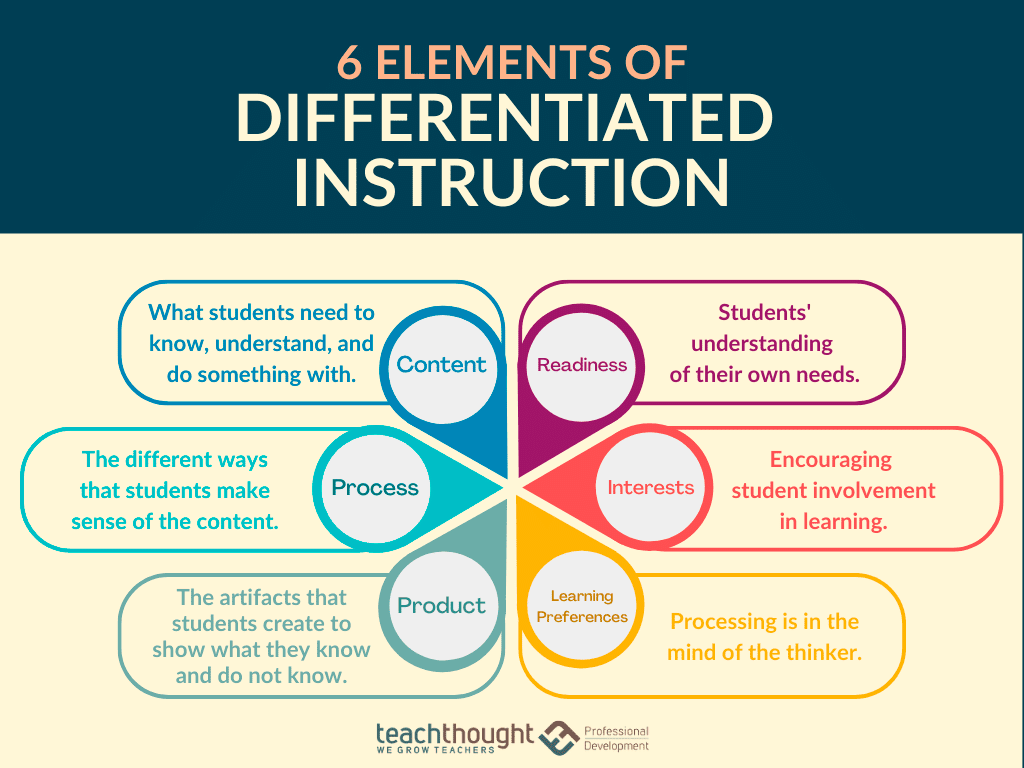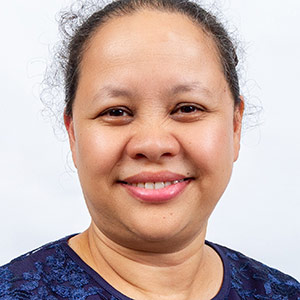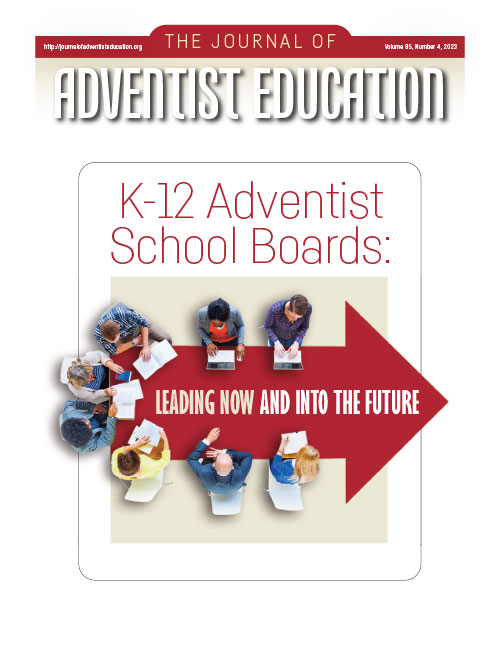Learning a new language can be a challenging experience for students. Teachers also face challenges in teaching second language learners since each learner comes from a different background, and some have more exposure to the language being learned than others.1 Many of these learners, in addition to learning to read and understand the new language, need help to speak or write in the targeted language. As a result, they can experience lack of motivation and discouragement while learning the language.2
In my years as a teacher of English language learners, some of my most enjoyable moments have come from teaching vocabulary. Students learning to speak the English language may have a limited vocabulary and having an in-depth knowledge of a wide variety of words is essential for language learning.3 In a study of 100 male students at Prince Sattam bin Abdulaziz University in Saudi Arabia during the academic year 2017-2018, Afzal identified some vocabulary learning problems that English language learners in the BA English program experienced:
- Learning the meaning of new words
- Using new vocabulary
- Pronouncing and spelling new words
- Memorizing and recognizing new words
- Understanding multiple meanings
- Guessing meaning
- Learning culture-specific words4
Several other studies have shown that students learning English face similar challenges, and teachers must find ways to help them learn and comprehend.5 Often, it is challenging for teachers to help students move from using simple, basic words with recognizable primary structures to more complex words that have multiple meanings, prefixes, and suffixes that change the meanings. These are words that need to be explained for them to be understood and modeled for correct pronunciation.6 Having varied ways to help students memorize and use vocabulary correctly is vital to a language teacher’s toolbox. Here are some approaches I have found useful:
1. Silent Minute. Students read silently and think about the passage given to them. Then they are asked to identify the main idea of the passage. The Silent Minute strategy allows the learners to comprehend the passage, insert or substitute appropriate synonyms, and acquire new words by building on words found in the passage. Furthermore, the Silent Minute allows the student to learn and then review the base/root word for any new vocabulary.
2. Video Clips. Videos can enhance students’ learning and provide a gateway to learning a new language. They can be used as visual aids or to enhance other visual aids that help language learners understand new vocabulary, grammar, and sentence formation.7 Video clips can be used to strengthen listening skills and help students with pronunciation. In addition to contextualizing real-life situations, videos can also expose students to different cultures, customs, and traditions of the English-speaking world, helping them improve their communication skills.8 When I use a video clip as part of a class activity, I ask students to look for the topic or theme and to provide a summary of it verbally or in writing.
3. Expressive Approach. This approach allows learners to express creatively what they think about the activities in the learning process and the tasks given to them. Students are divided into groups and assigned tasks to work on together. For example, I ask my students to identify a topic they believe in or feel strongly about. Then I divide them into small groups and encourage them to use language creatively and to express their thoughts and feelings. The main goal is to develop the learners’ ability to communicate effectively with one another. Activities like role-playing, storytelling, and creative writing allow learners to practice using the language in different contexts and to develop their own unique way of learning the targeted language. The expressive approach is often used in teaching communicative language, emphasizing the importance of real-life communication and interaction. Teachers should plan on responding to these activities with sensitivity and care. Providing feedback in a way that is culturally appropriate, careful, and kind is essential to building the learner’s confidence.
4. Think-aloud. Think-aloud is a cognitive strategy where the learner verbalizes his or her thoughts while completing a task. It is an effective way to help students learn to monitor their own thinking. In English education, think-aloud is often used as a teaching strategy to encourage learners to develop their metacognitive skills for understanding a task or activity. The think-aloud exercise helps students talk through their thinking process as they complete a task.9 This helps learners to understand how they approach the task, the strategies they use, and their decision-making processes. It also helps the teacher identify any misconceptions or gaps in understanding. To summarize, think-aloud can be a powerful technique for enhancing metacognitive awareness and improving learning outcomes.10 Encouraging the students to methodically examine their learning processes will help them to better understand their learning styles and to develop methods for improving their performance.
5. Calendar of Words. Students are asked to create or purchase an empty (blank) calendar with the outline for the days of each month. On each calendar day, they are to insert a new vocabulary word and a date. Daily, the teacher provides new vocabulary words for students to write on their calendars. The words can be integrated into daily lessons and assignments. This approach can be used for a month or semester, or to support a whole year of learning. The calendar helps learners remember these new vocabulary words. Students can display the calendar in their homes for daily perusal or—for smaller versions—keep them in their notebooks as reminders to use the words in daily speaking interactions. I have found this to be a very effective strategy for vocabulary retention.
6. Visualization. This technique can be used to help second language learners better understand and remember new vocabulary. Learners are encouraged to create mental images of the new words or phrases. For example, when an English language learner tries to remember the word diagram, he or she could visualize any drawing of a diagram. Such images can help learners quickly memorize the words and associate the image of the word with the meaning, making a cognitive connection.11 This strategy can be used by both teachers and students to create visual aids, flashcards, or diagrams to explain new concepts. Visualization helps engage the imagination and enables learners to make connections between new language elements and their meanings.
7. Differentiated Instruction. Differentiated instruction means adjusting and adapting to the needs of the learners. Westwood referred to it as “mixed ability to teach.”12 This means that the teacher instructs students of varying abilities in the same space while giving each pupil the same materials and resources. Students in a classroom come from different cultures, possess different learning attitudes, and have different interests. A teaching strategy known as differentiated instruction adapts lessons to the individual learning requirements of each student. Every student aims to learn the same thing. However, the way that students are taught differs according to their passions, inclinations, assets, and challenges. Below is a figure of the six elements of differentiated instruction and how teachers must understand having different learners within a classroom.

Differentiated instruction recognizes and seeks to cater to learners’ unique, varied learning styles and needs. This approach to instruction requires the teacher to restructure the classroom to accommodate students’ diverse learning abilities, interests, and profiles13 and to modify lessons to meet the needs of the learners.14 The teacher can incorporate flexible groupings and tiered activities in many ways. Flexible groups are shaped around what students need or to address their interests—in contrast with fixed groups, which are based on grade level. Homogenous groups can be used for students with the same ability level; while heterogeneous groups can accommodate students with different abilities, backgrounds, or interests. Flexible groups can change as learners develop skills or to better address their needs.15
Tiered activities can be created at varying levels of complexity but are presented in ways that ensure that the instruction meets the needs of learners at different levels. For example, if the lesson objective is for each student to be able to engage in conversation with another learner, then the conversation component of the lesson can be tiered. One group of learners may need help to complete generic greetings such as “Hello, I’m ______” or “My name is ______ ,” while another group may be at the level of being able to roleplay simple conversations, and a third group is able to conduct a full discussion on a topic of interest. Although the goal is for all learners to engage in conversation, tiered assignments provide varying levels of complexity and engagement so that students at different levels of expertise can build the skills they need.16
8. Using Web Tools. Web tools provide second-language learners with engaging and interactive learning experiences that facilitate the development of a variety of skills.17 They are also a great help in teaching the targeted language to second language learners. These tools include Quizlet (quizlet.com) for simple exercises, Freerice (freerice.com) for vocabulary learning, Kahoot (kahoot.com) for creating simple quizzes, and many others.18 These web tools support language teaching by providing a variety of digital resources, assignments, and feedback that is useful for both teachers and learners.
I prefer activities that allow students to participate, have fun, and learn simultaneously. Some activities that work well include flipped activities, pair work, sharing with a neighbor, roleplay, mix and match, grid activities, pictures representing words, and impromptu oral presentations. These cooperative learning activities encourage a better understanding of vocabulary and allow students to mingle and get to know one another well. The social aspect makes the class more enjoyable for many students, which helps boost their learning and enthusiasm. Building self-esteem and confidence is a gradual process that involves consistent effort and positive reinforcement. Activities encourage personal strengths and interests, and encourage acquisition of new skills and knowledge, and can help students develop interpersonal skills.
Conclusion
Many different strategies can be used to help students navigate the challenges of learning a new language. Some of these challenges include developing a strong vocabulary in the language, learning how to pronounce new words, understanding the new culture, and developing confidence in learning to communicate and converse. Strategies such as the Silent Minute, think-aloud, calendar of words, visualization, and the use of video clips and web tools can be effective in creating interest and building cognitive skills. Incorporating differentiated-instruction approaches can also help target the varied needs of language learners. As teachers, we can take encouragement from the Scriptures, which counsel, “If your gift is serving others, serve them well. If you are a teacher, teach well” (Romans 12:7, NLT).19 And, with this counsel comes a promise that we can do all things with the strength and help provided by Christ (Philippians 4:13). As we actively look for ways to adapt and adjust the learning and teaching environment to support language acquisition, let us do our best to deliver the best for our students and to prepare them for life here on earth and for heaven.
Recommended citation:
Carol Linda Kingston, “Effective Strategies for Teaching Second Language Learners,” The Journal of Adventist Education 85:4 (2023): 31-35. https://doi.org/10.55668/jae0057
Retrieved from Thought Stretchers Education at https://www.teachthought.com/pedagogy/ways-to-differentiate-instruction. Used with permission.
NOTES AND REFERENCES
- Mary Susan Anyiendah, “Challenges Faced by Teachers When Teaching English in Public Primary Schools in Kenya,” Frontiers in Education l:2 (2017): 1-3: https://doi.org/10.3389/feduc.2017.00013.
- Isidor Haufiku, Percy Mashebe, and James Abah, “Teaching Challenges of English Second Language Teachers in Senior Secondary Schools in the Ohangwena Region, Namibia,” Creative Education 13:6 (2022): 1,941-1,964: https://doi.org/10.4236/ce.2022.136121.
- Margaret G. McKeown, “Effective Vocabulary Instruction Fosters Knowing Words, Using Words, and Understanding How Words Work,” Language, Speech, and Hearing Services in Schools 50:4 (2019): 466-476: https://files.eric.ed.gov/fulltext/EJ1234125.pdf.
- Naeem Afzal, “A Study on Vocabulary-learning Problems Encountered by BA English Majors at the University Level of Education,” Arab World English Journal, 10:3 (2019): 81-98: https://dx.doi.org/10.24093/awej/vol10no3.6.
- Claire Sibold, “Building English Language Learners’ Academic Vocabulary: Strategies and Tips,” Multicultural Education 18:2 (Supplement Special Issue 2011): 24-28: https://files.eric.ed.gov/fulltext/EJ951842.pdf; Meghan Hunt and Jay Feng, “Improving Vocabulary of English Language Learners Through Direct Vocabulary Instruction.” Paper presented at Chinese American Educational Research and Development Association Annual Conference, April 7-8, 2016. Washington, D.C., U.S.A.: https://files.eric.ed.gov/fulltext/ED565637.pdf.
- Ashley G. Cummings, Rebekah E. Piper, and Ramona T. Pittman, “The Importance of Teaching Vocabulary: The Whys and Hows,” Journal for Literacy Educators 4:6 (2018): 37-43: https://digitalcommons.tamusa.edu/cgi/viewcontent.cgi?article=1003&context=read_faculty.
- Matt Kessler, Shawn Loewen, and Daniel Trego, “Synchronous Video Computer-mediated Communication in English Language Teaching,” ELT Journal 75:3 (2021): 371-376: https://doi.org/10.1093/elt/ccab007.
- Adambaeva Feruza Rustambekovna and Khajiyeva Iroda Adambayevna, “The Effectiveness of Applying Video Materials in Communicative Language Teaching,” Part 2, European Journal of Research and Reflection in Educational Sciences 8:2 (2020): 108-115: https://www.idpublications.org/wp-content/uploads/2020/02/Full-Paper-THE-EFFECTIVENESS-OF-APPLYING-VIDEO-MATERIALS-IN-COMMUNICATIVE-LANGUAGE-TEACHING.pdf.
- Yasemin Sönmez and Süleyman Erkam Sulak, “The Effect of the Thinking-aloud Strategy on the Reading Comprehension Skills of 4th Grade Primary School Students,” Universal Journal of Educational Research 6:1 (2018): 168-172: https://doi.org/10.13189/ujer.2018.060116.
- Sharon M. Pratt and Tracey S. Hodges, “The Think-aloud Observation Protocol: Developing a Literacy Instruction Tool for Teacher Reflection and Growth,” Reading Psychology 44:1 (2023): 1-31. https://doi.org/10.1080/02702711.2022.2126572.
- Olena Kolodii, Iryna Kovalchuk, and Olena Syvak, “The Impact of Visualization Techniques on Students’ Learning Vocabulary,” International Journal of New Economics and Social Sciences 69:2 (2017): 359-367. https://doi.org/10.5604/01.3001.0010.7649.
- Peter S. Westwood, What Teachers Need to Know About Differentiated Instruction (Melbourne, Victoria, Australia: Australian Council for Educational Research Press, 2016), 5.
- Pearl Subban, “Differentiated Instruction: A Research Basis,” International Education Journal 7:7 (2006): 935-947. https://files.eric.ed.gov/fulltext/EJ854351.pdf.
- Melek Sapan and Enisa Mede, “The Effects of Differentiated Instruction (DI) on Achievement, Motivation, and Autonomy Among English Learners,” Iranian Journal of Language Teaching Research 10:1 (2022): 127-144: https://files.eric.ed.gov/fulltext/EJ1330093.pdf.
- TeachThought Staff, “5 Ways to Differentiate Instruction” (April 18, 2023): https://www.teachthought.com/pedagogy/ways-to-differentiate-instruction; Lori McDonald, “Flexible Grouping as a Differentiated Instruction Strategy,” TeachHub (2014): https://www.teachhub.com/classroom-management/2014/09/flexible-grouping-as-a-differentiated-instruction-strategy.
- Carol Ann Tomlinson, “Differentiating Instruction: Why Bother?” Middle Ground 9:1 (2005): 12-14; Carol Ann Tomlinson and Marcia B. Imbeau, Leading and Managing a Differentiated Classroom (Alexandria, Va.: Association for Supervision and Curriculum Development, 2010).
- Ava Clare Marie Oclarit Robles, “The Use of Educational Web Tools: An Innovative Technique in Teacher Education Courses,” IJ Modern Education and Computer Science 5:2 (2013): 34-40. https://doi.org/10.5815/ijmecs.2013.02.05.
- Seher Balbay and Gökçe Erkan, “Perceptions of Instructors on Using Web 2.0 Tools in Academic English Courses,” International Journal of Curriculum and Instruction 10:2 (2018): 45-60. https://files.eric.ed.gov/fulltext/EJ1207281.pdf.
- New Living Translation (NLT). Holy Bible, New Living Translation, copyright © 1996, 2004, 2015 by Tyndale House Foundation. Used by permission of Tyndale House Publishers, Inc., Carol Stream, Illinois 60188. All rights reserved.




